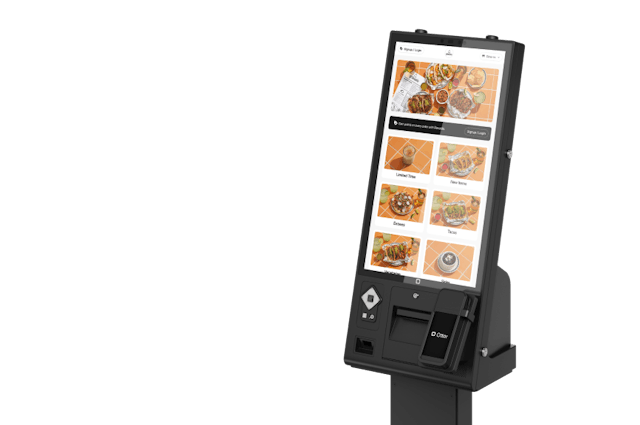
Why kiosks in fast food restaurants are here to stay
Table of contents
- Kiosks in fast food restaurants: From small businesses to franchisees
- Benefits of kiosks for both businesses and customers
- Addressing common kiosk challenges
- Innovations driving the future of fast food kiosks
- Real-world success: Otter case study of kiosk adoption
- Why kiosks are here to stay
- Future trends in the restaurant industry: What to expect?
If you’ve stepped into McDonald’s or Burger King in the last year, you’ve likely bumped into an oversized smartphone-looking object, complete with a digital menu, a credit card reader, and high-quality images of mouthwatering bites. This modern piece of technology is known by many names, but most commonly called a self-service digital ordering kiosk – and it’s transforming the fast-food restaurant industry at lightning speed.
In this post, we’re going to sink our teeth into kiosk technology, providing valuable insights into the benefits, challenges, and predicted innovations, empowering you, as a restaurateur, to stay ahead in a rapidly evolving industry.
Kiosks in fast food restaurants: From small businesses to franchisees
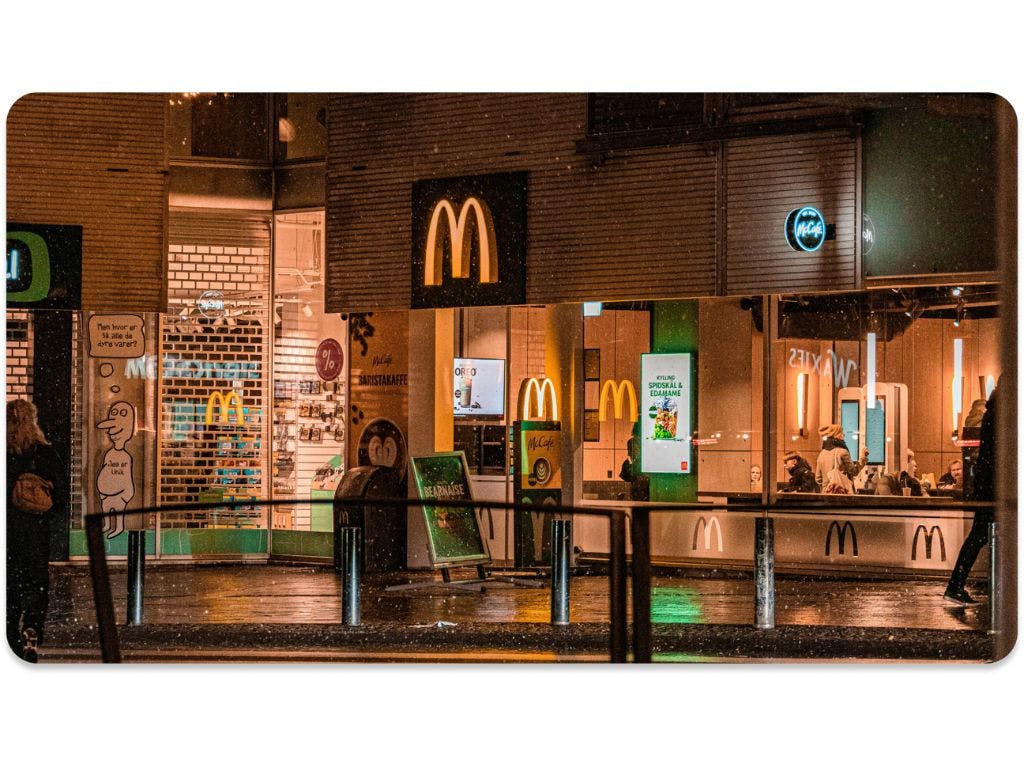
In 2017, McDonald’s introduced a new, futuristic initiative to the world. Their ‘Experience the Future’ campaign successfully utilized technology to enhance the customer service experience. Within two years, over 3,000 McDonald's locations were equipped with digital ordering kiosks that allowed hungry customers to order and pay digitally whether they chose to order inside or from their cars. Other fast food chains quickly followed suit according to Datos Insights, and by 2023, 43% of establishments worldwide had installed around 350,000 kiosks, resulting in reduced wait times, increased efficiency, and happy eaters.
That number is expected to double by 2028. Why? Well, regardless of whether you’re running a franchise like Subway or a small, independent quick-order diner, restaurant kiosks have shown an unstoppable ability to streamline operations, reduce labor costs, and increase sales through upselling. Their widespread adoption across all restaurant types reflects a significant shift in the QSR industry from humanized interactions to digital ordering systems.
Benefits of kiosks for both businesses and customers
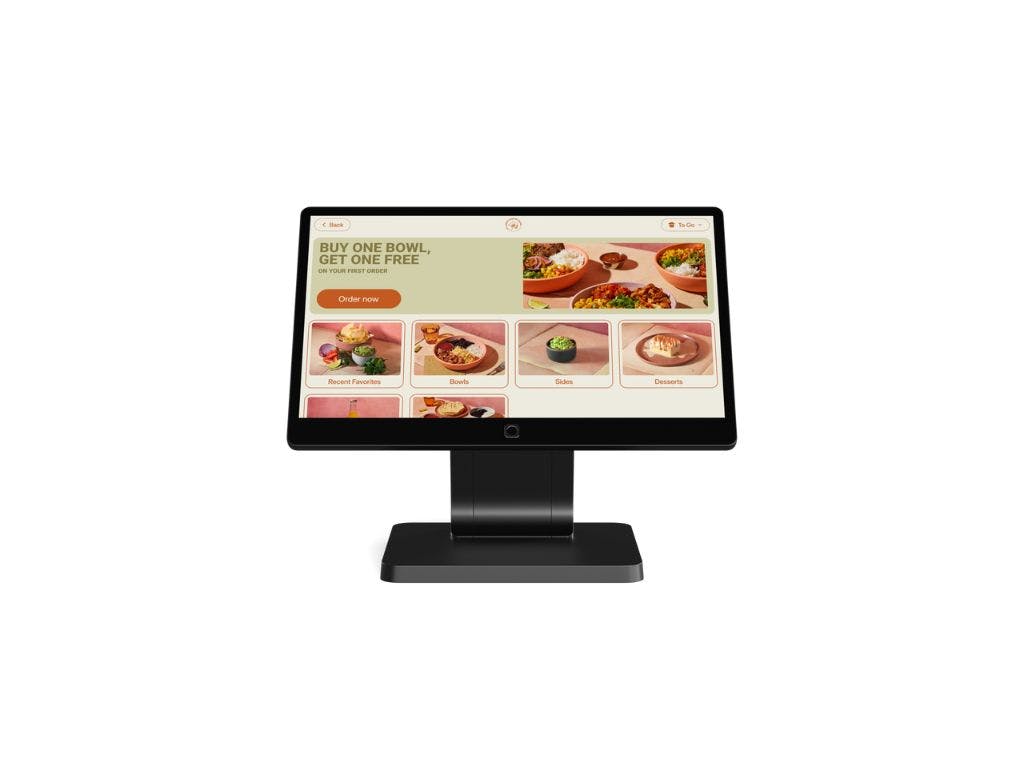
For businesses/restaurants:
The benefits of introducing digital ordering kiosks to your business are abundant. Here are just a handful of perks you can expect by incorporating the platform into your own establishment.
Increased order accuracy and reduced errors
You know how sometimes when you go to Starbucks or a coffee chain, an unrecognizable name is written on your to-go coffee? You’re left wondering how the barista got the name “Jeffrey” out of “John”. Self-service kiosks enable customers to input information themselves, reducing the likelihood of miscommunication or data entry mistakes that can occur with human interaction. This leads to higher accuracy in orders, which is crucial for maintaining customer satisfaction and eliminating confusion and order errors.
Faster service kiosks streamline the order management, allowing multiple people to place orders simultaneously without waiting in line for a cashier. Service is therefore accelerated, wait times reduced, and businesses can serve more hungry customers during peak hours.
Reduced labor costs
By automating routine tasks such as order-taking and payments, kiosks free up staff to focus on more complex or customer-centric activities. This can lead to significant savings in labor costs, as businesses can instead allocate workers more efficiently and make the most of their resources and staff time.
Data collection for better insights and customer loyalty
This is your chance to use tech to learn more about the things your customers like and don’t like. With a kiosk, you can collect valuable data on their behavior and preferences to use for analytics, marketing strategies, and improving the overall customer experience. This data - such as their frequently ordered items and preferences - will not only help you make informed decisions about products and services, it will also enhance customer loyalty and give you tips on how to personalize their visits.
Upselling and cross-selling opportunities
Is there a side soup that goes well with that chicken sandwich? What about a new dessert you’d love your customers to try? Instead of relying on staff who might get too distracted or impatient to upsell, add a prompt to your restaurant’s kiosk system. By adding additional product recommendations or visually appealing promotions, you’ll increase your opportunities for upselling and cross-selling, leading to higher sales and revenue.
Otter Kiosk customer and fast food restaurant, IDK Philly, has experienced higher sales per customer since using these self-serve kiosks. Owner Reda states “When our customers use the kiosk, they keep adding, adding, and adding, to their orders. In my mind, I feel like they don't have anybody judging them on what they're getting so they just add more on their own and it bumps the sales up. We’ve seen a lot of upselling with the Otter kiosks for sure.”, more here.
For customers:
Convenience and time-saving
It’s become clear that many customers prefer kiosks to humans as they’re faster and more convenient, matching the pace of our society in many places today. It’s easy to order, wait times are reduced, and people have more control over what, and how, they buy.
A personalized experience
With so many customers coming in and out each day, it can be challenging for staff to remember each and every name. With an automated kiosk system, names and customer preferences are saved, making the experience more personalized. Customers will see targeted recommendations and tailored content, therefore enhancing engagement and heightening satisfaction.
Increased accuracy
Kiosks give customers the option to review an order before submission, ensuring that all information is correct and everything they want is listed. This makes the tickets sent straight to the kitchen accurate and avoids order errors.
Interactive experience
In a world that’s increasingly more virtual, customers appreciate the ability to interact and engage with multimedia content that includes high-quality visuals, interactive maps, product catalogs, and promotions. Not only will these experiences enhance satisfaction, they’ll encourage customers to return again and again.
A real-life example:
Flavor District, a virtual food hall in North Carolina, is a prime example of how businesses can thrive by adopting self-service kiosks to improve the user experience. Instead of a traditional sit-down concept, owner David Foye and General Manager Travis Elias opted for a take-out only model for their 11 food vendors, leveraging Otter Kiosks to enhance their customer and vendor experience.
The benefits were quickly obvious, including:
- Visual appeal for higher sales: Foye noticed that "vendors that don't have photos don't have as many sales." By including high-quality food photography, they can guarantee a more profitable experience for their vendors.
- Ease for everyone: The intuitive interface of Otter Kiosks has improved both customer and staff experiences. By streamlining operations, the self-ordering kiosks cut down on confusion and sped up the ordering process. Elias and Foye have found this to be particularly valuable for older customers who may struggle with QR codes and mobile ordering.
- Community impact: By providing a platform for local, independent food vendors to thrive in the digital age, Flavor District has both adapted to changes in the quick-service restaurant industry and contributed to community growth and entrepreneurism.
Addressing common kiosk challenges

When the experts at Otter first began designing our intuitive, affordable, and easy-to-use kiosk system, it was critical to recognize challenges and find a way to overcome them. We studied the setbacks many customers experienced when fast food ordering kiosks were first introduced to the masses, including:
Technical issues: Retailers had trouble implementing the new software across their store networks.
Cost of installation: The cost of purchasing and installing a QSR kiosk can range from $1,500 to $5,000, depending on the complexity and features of the kiosk. This is nothing in comparison to the ROI, which Otter has brought tangible value to restaurants:
- + 60% kiosk order value vs. to counter service
- + 39% average kiosk order value 5 months post-deployment
Training staff on new technology: Employees need to be trained on how to use, maintain, and troubleshoot kiosks, an act that once felt time-consuming. Otter designed its system to be incredibly easy-to-use and, as a result, is well-loved by staff. Marlon Medina, owner of Jose Chiquito, points out, "Otter gives me the capacity to focus on myself and on solutions. It’s easy, it’s affordable, it’s convenient.”
Customer adaptation and resistance: Some customers, especially less tech-savvy individuals, felt a resistance to using kiosks initially. Otter wanted to be sure kiosks were accessible for all by including features like larger font options, user-friendly interface, higher contrast for visibility, and more.
Through improved design, user-friendly interfaces, and enhanced accessibility features, Otter has addressed these complications. We’ve specifically created our kiosks to be user-friendly for both customers and staff. As your business grows, so do we, and our systems are developed to adapt with your expansion.
Innovations driving the future of fast food kiosks
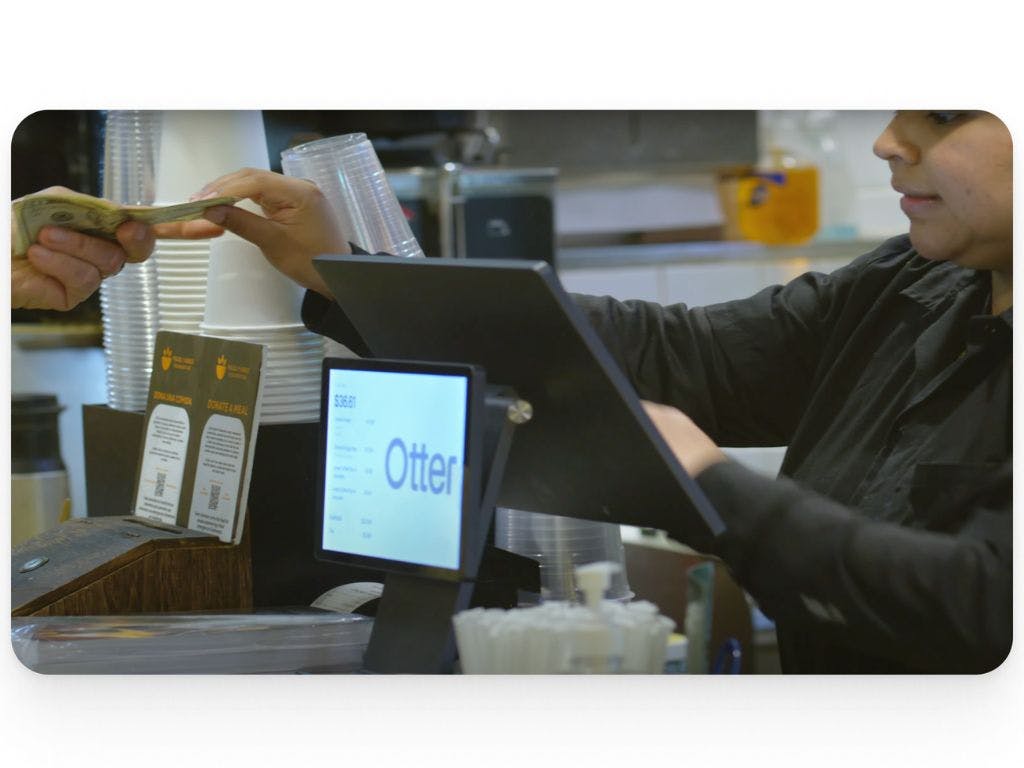
The latest innovations in fast food ordering kiosk technology are quickly transforming the way customers interact when they dine. The future of kiosks is guaranteed to improve both the customer experience and operational efficiency. Here are some of the most exciting developments:
AI-powered personalization
Kiosks are beginning to integrate AI algorithms that analyze customer preferences, past orders, and dietary restrictions to provide customized recommendations. For instance, if a customer frequently orders vegetarian items, the kiosk can prioritize these options or suggest appropriate add-ons.
Contactless payment integration
Contactless payment technologies make transactions faster and more convenient. Kiosks are being designed to accept credit/debit cards, smartphones, smartwatches, and digital wallets.
Voice recognition and natural language processing
Voice recognition technology is revolutionizing kiosk interactions by enabling a touchless order experience using voice commands. This is a huge benefit for patrons who aren’t comfortable with touchscreens or those with visual impairments. Additionally, many kiosks are integrating NLP (natural language processing) which recognizes multiple languages and adapts the order experience accordingly.
Dynamic menu displays and recommendations
AI-driven kiosks can dynamically display menu items based on trending or seasonal preferences. These kiosks analyze customer behavior and inventory levels to suggest popular items, promote high-margin products, and offer personalized promotions. This approach not only enhances the customer experience but also drives higher sales and revenue for businesses.
Real-time adaptation to dietary preferences and lifestyle choices
At the same time, the same AI algorithms are being designed to adapt to specific dietary restrictions such as gluten-free, vegan, or other lifestyle choices, in real-time. This ensures customers receive suggestions that align with their unique dietary needs, making the ordering process more efficient and satisfying.
Here at Otter, we’re always looking ahead. Our engineers have already incorporated a successful AI-driven upsell program, as well as real-time analytics so you have minute-by-minute access to your restaurant’s performance data. At present, we are working to implement multi-store accessibility within a single kiosk, loyalty programs across all ordering channels, and menu customization for customers.
Real-world success: Otter case study of kiosk adoption
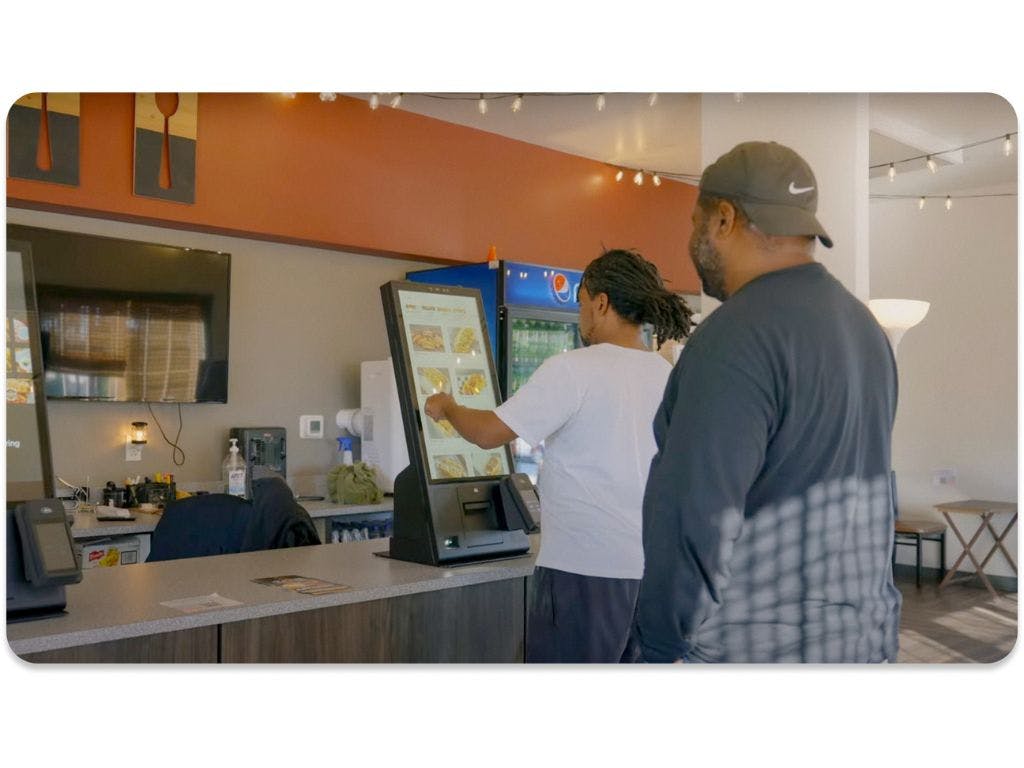
Otter client IDK Philly saw significant benefits from implementing Otter's kiosk technology. Owner Reda Labbakh immediately noticed how well the QSR kiosk streamlined the ordering process by reducing wait times and improving customer satisfaction. Integrating the technology with the restaurant’s existing systems was seamless. "The kiosks have been a game-changer for us. Customers love the ease of use, and it's helped us manage our orders more efficiently. We've seen a significant reduction in errors and an increase in customer satisfaction."
More than increased efficiency, an easy rollout, and improved customer satisfaction, Otter’s kiosk systems are visually appealing, therefore driving more sales. Remember that Flavor District, the previously mentioned virtual food hall in North Carolina, saw that vendors who didn’t offer high-quality photos saw significantly lower profits. With visuals, people were more likely to buy.
Something McDonald's knows all too well. The fast food giant’s implementation of the world’s first grand scale kiosk technology led to a litany of benefits, like:
- A sales increase of 6% within the first year of use
- A significant reduction in wait times, especially during peak hours
- High levels of loyalty, as customers loved the control they had over their experience and the ability to customize their orders
- Optimization of staff allocation, as workers could now focus on food preparation, improving customer service, and site cleanliness
Despite the restaurant industry’s initial resistance, the benefits of kiosk integration are abundant, which is why more dining establishments are opting to adopt it.
Book a demo with Otter
It’s time to enhance your operations with Otter’s all-in-one restaurant platform. Book time with our sales team to learn more.

Why kiosks are here to stay
The facts are clear – the advantages of self-service kiosks are numerous, which explains why the technology is even more of a staple in the fast food industry. Self-service kiosk abilities are expected to continue evolving significantly over the next 5-10 years, further enhancing the customer experience and labor optimization. Here’s what to expect:
Improved personalization when ordering
The integration of AI-driven recommendations, voice commands, and dynamic menu displays will make it easier to offer tailored menu items and promotions based on preferences and order histories during self-checkout.
Increased revenue and profitability
According to a 2024 article in Entrepreneur, self-serve kiosks are driving customers to order more by highlighting add-ons and upgrades. A study by the University of South Florida found that digital ordering platforms lead to more indulgent food choices and increased spending.
Automation and self-service trends
With automation in all life aspects playing such a crucial role, kiosks will continue to evolve to include more AI-driven features like predictive analytics and inclusive ordering options.
Now we know that kiosks are a permanent fixture in the restaurant industry. Their ability to enhance efficiency, customer experience, and profitability is untouchable. With further advancements in technology, kiosks will evolve to include more automation, self-service features, and system integrations. They will have a profound impact on labor, customer behavior, and the restaurant industry itself, making them an indispensable tool for modern dining.
Future trends in the restaurant industry: What to expect?
As we look into the 2025 restaurant industry trends and beyond, one fact is undeniable: adapting to emerging trends is essential for success. Customers want healthier, more sustainable menu options, and many diners are actively seeking out restaurants that align with those values. Additionally, AI and automation is quickly revolutionizing restaurant management duties, enhancing efficiency while delivering personalized experiences to foster customer loyalty.
By embracing modern all-in-one technology solutions like Otter's POS system, restaurant owners can streamline their processes, optimize food costs and inventory, and create tailored dining experiences that resonate with guests.
As we approach 2025 and beyond, those who proactively adopt these trends will meet customer expectations and gain a competitive edge in an ever-evolving market. Now is the time to take action—invest in innovative strategies and position your restaurant for long term achievement.
